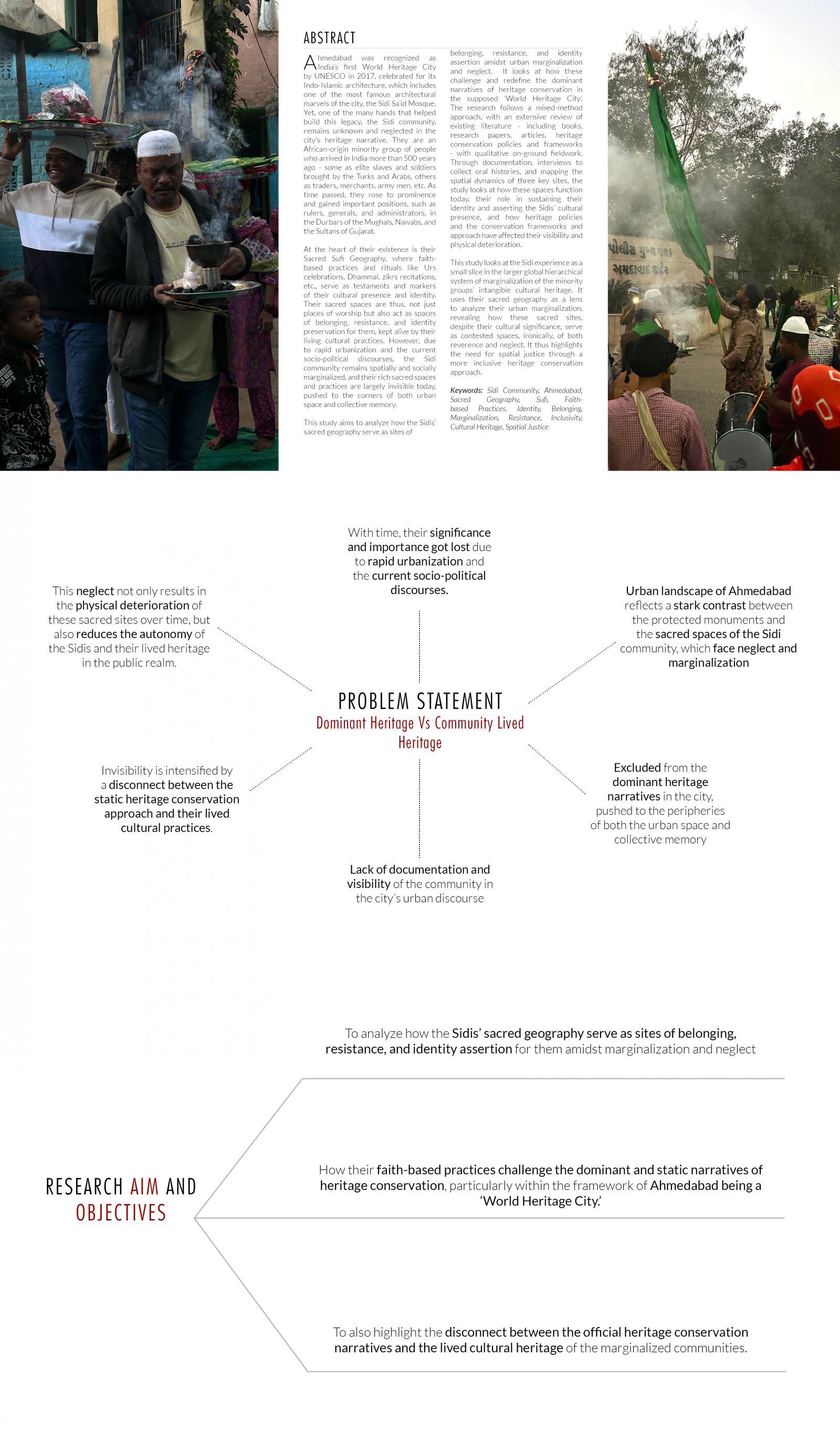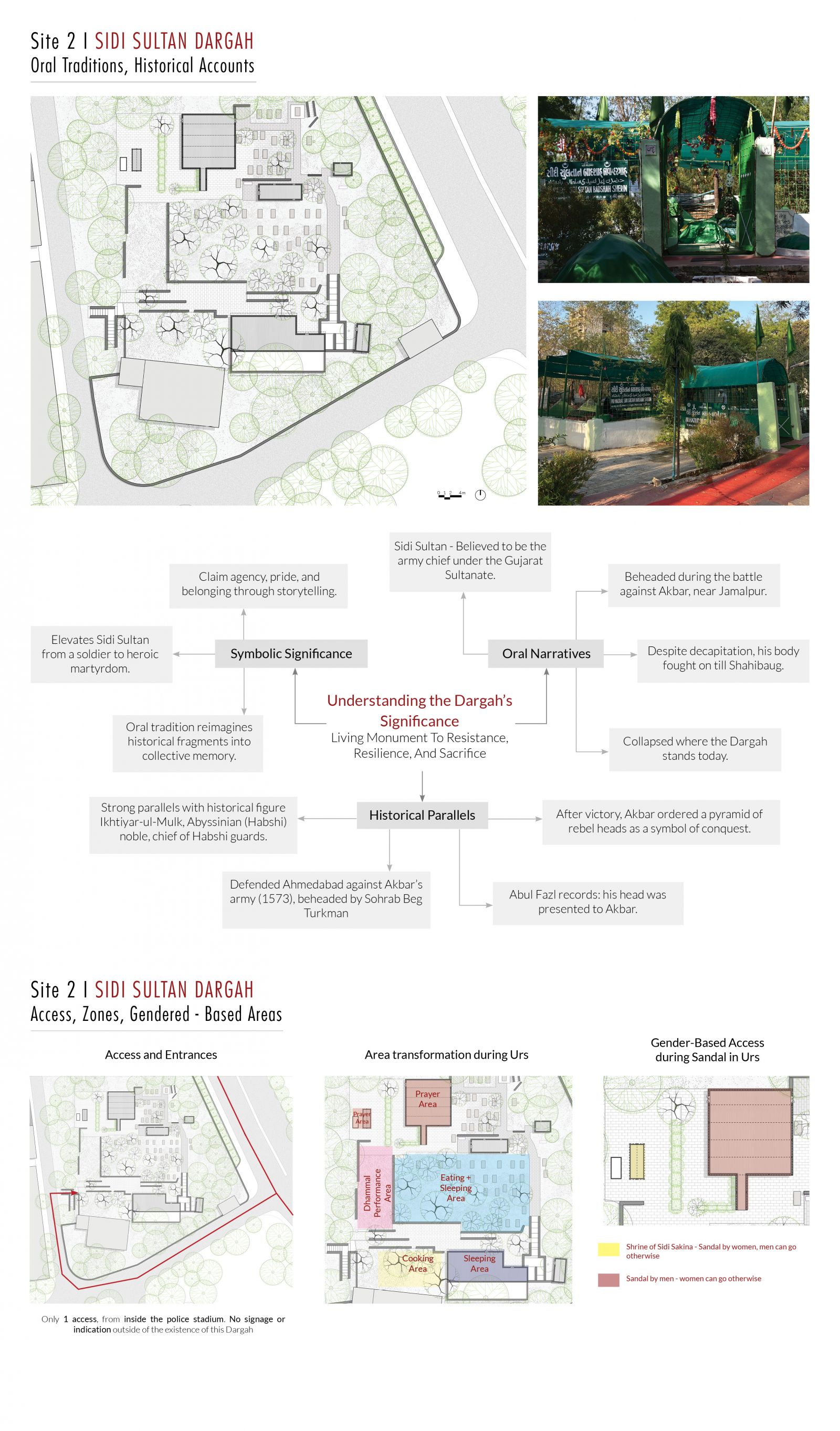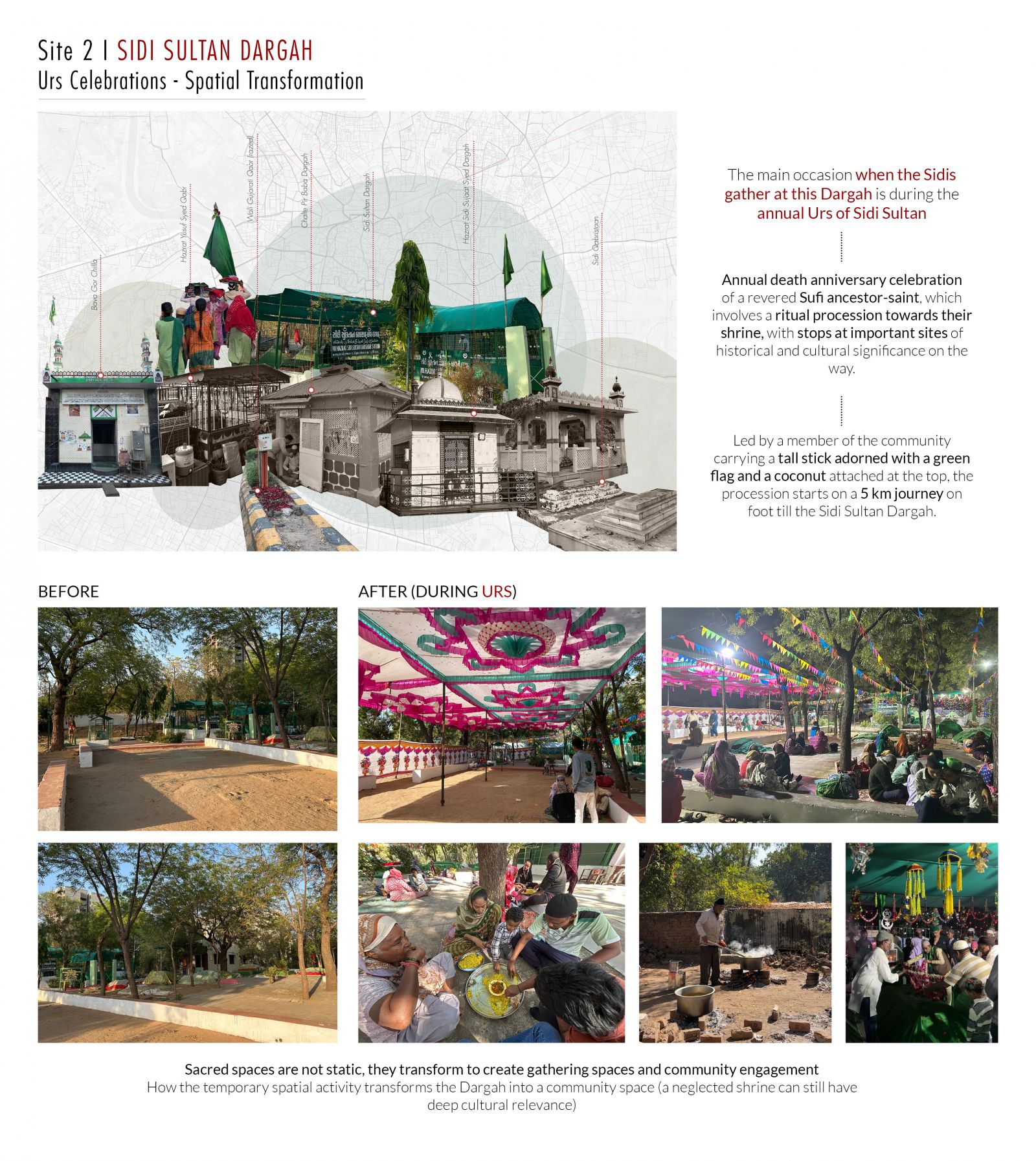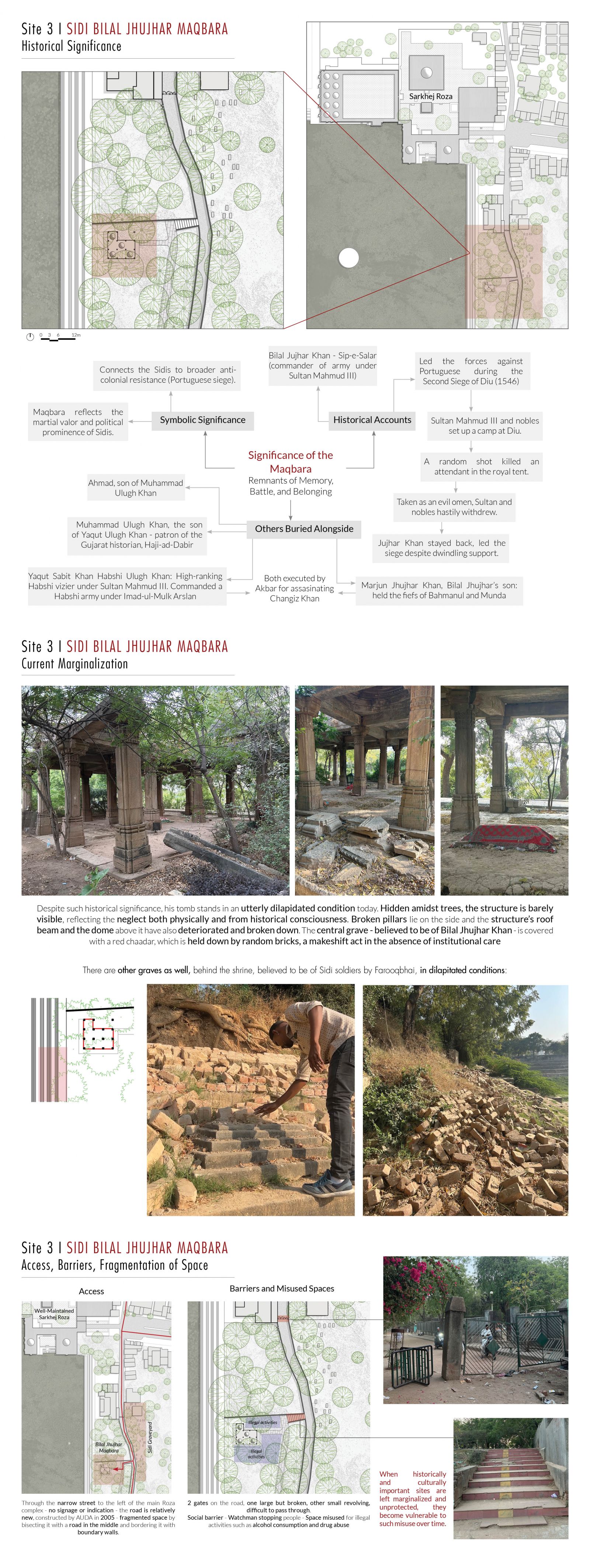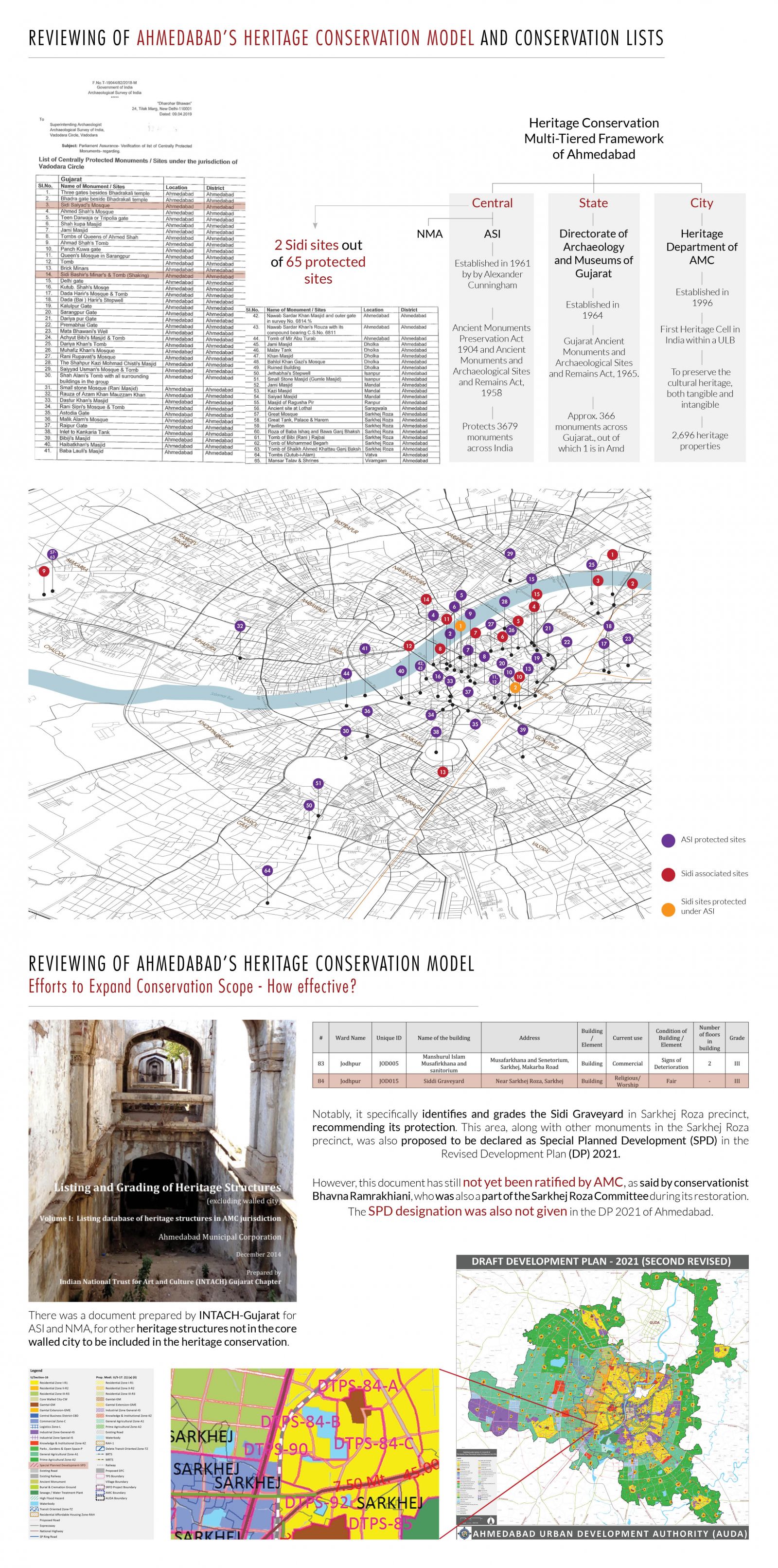Your browser is out-of-date!
For a richer surfing experience on our website, please update your browser. Update my browser now!
For a richer surfing experience on our website, please update your browser. Update my browser now!
Ahmedabad, declared India’s first UNESCO World Heritage City in 2017, is celebrated for its Indo-Islamic architecture, including landmarks like the Sidi Sa’id Mosque. Yet, the Sidi community—an African-origin minority integral to this legacy—remains largely invisible in the city’s heritage narrative. Arriving over 500 years ago as soldiers, traders, and elite slaves, they rose to positions of power under the Mughals, Nawabs, and Sultans of Gujarat.
Central to their identity is a Sacred Sufi Geography, where rituals like Urs, Dhammal, and zikr are not only religious practices but acts of cultural survival, belonging, and resistance. However, these spaces and traditions are increasingly marginalized amidst rapid urbanization and exclusionary heritage discourse.
This study examines how Sidi sacred spaces function as sites of identity and resistance, challenging dominant conservation narratives in the so-called 'World Heritage City.' Using literature review, fieldwork, oral histories, and spatial mapping of three key sites, it explores their role in asserting presence and how current heritage frameworks contribute to their erasure.
By situating the Sidi experience within broader global patterns of marginalization, this research calls for spatial justice and a more inclusive approach to conserving intangible cultural heritage.
